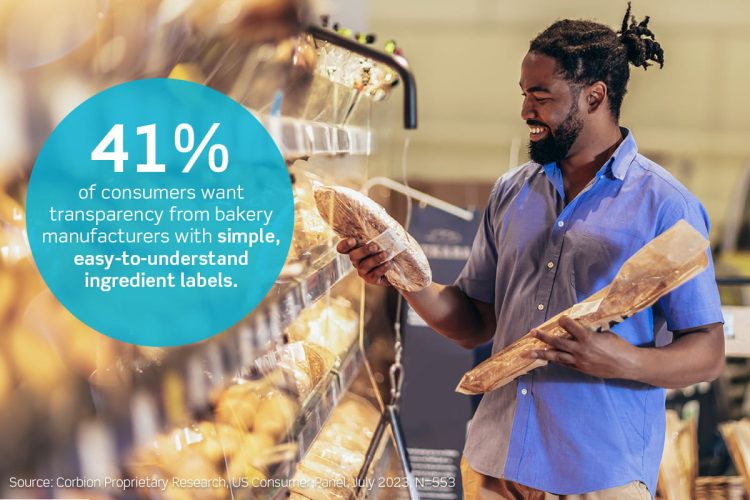Grasping perceptions and drivers behind the “clean label” movement can help food manufacturers develop offerings that build stronger relationships with consumers.
Once considered a significant market trend, the widespread consumer preference for food products with familiar, understandable ingredients is now much more. What many call the “clean label” movement is clearly here to stay. Although the phenomenon has been observed and analyzed by food manufacturers and market researchers for years, understanding its limits and drivers is difficult to do with any precision.
Current buying behaviors
Given the continuing growth of products offering more consumer-friendly labels, one might assume that sales of products with traditional formulations are waning. But what consumers say about what they want in a product doesn’t always line up with their actual purchases. This truth has held many bakers and other food manufacturers back from taking on the costs and rigors of reformulation. The logic goes: If they’re continuing to buy the product we offer, why change what’s working?
A proprietary study conducted by Corbion in 2023 revealed insights that may be masking that logic. According to the study’s findings, half of all consumers surveyed reported consuming bread or bun products that have ingredients they don’t recognize within the past week. Even more younger consumers (68%) said the same, but 43% of this subgroup – more than any other – also expressed a level of uncertainty or unease about consuming ingredients they don’t understand or recognize, wondering if they may be unsafe to eat.1
Why then does there seem to be a disconnect between preferences and purchasing behaviors for many concerned consumers? There is likely no single explanation, but rather a variety of reasons that may include hectic lifestyles, perceived brand attributes, a lack of clarity about labeling terminology, and uncertainty regarding the relative healthfulness of specific ingredients.
Still, despite the fact that breads, buns and rolls with simpler labels are outperforming more traditionally formulated products – especially among younger consumers – there remains a trust gap among those who say that clean ingredient labels are important to them. Research published by Innova Market Insights in 2023 found that 67% of consumers globally are expressing a greater concern for transparency when making buying decisions than they did a year ago, and this was especially true among younger respondents.2 And, according to the Corbion study, 40% of young consumers say they would be willing to switch to another brand if that brand’s label was easier to understand.1
Exploring “clean label” perceptions
What constitutes a “clean label” for consumers?
The 2023 Corbion study asked respondents to rank labeling attributes for bread and bun products. Results showed that 31% looked for an “all-natural” claim more than any other; 19% looked for ingredients they understand and trust, while 18% gravitated toward a “no artificial ingredients” claim. 1 Among Gen Z respondents, 26% cited “no chemical-sounding ingredients” as their primary requirement.1 Key clean label claims in bakery are based on formulations using ingredients that are recognizable or understandable for most shoppers.
Bakery consumers seem to be less concerned with the length of the ingredient list and are more concerned with clean label attributes and understanding the purpose of certain ingredients. Results of the Corbion study showed that 41% of consumers want transparency from bakery manufacturers with simpler, easier-to-understand ingredient labels.1
Eliminating unfamiliar ingredients from a formulation helps buyers better understand the label, which, in turn, helps them feel secure about what consuming a product might mean for their health. Calcium propionate is considered not natural by 32% of consumers,1 yet it is still a component of the majority of bakery products sold today; 62% of bread, bun, and roll products contain calcium propionate.1 Cultured wheat, rice, or corn and fermented ingredients, on the other hand, are generally recognized by consumers and considered to be natural.1
Corbion’s clean label study asked consumers if they would feel better about a bread brand if they understood what some of the unknown ingredients are used for (i.e., to add texture, for freshness, for flavor, etc.); 42% of all those surveyed agreed that they would, while among members of the younger generations, that figure was 50%.1
Seizing the trust opportunity
The distrust and uncertainty felt by such a significant portion of younger consumers – who represent the future of market demand – present bakery brands with an opportunity for growth by building trust through greater transparency and clean labeling. Prioritizing the selection of more familiar, nature-based ingredients consumers recognize over traditional fossil-based solutions with chemical-sounding names can provide younger consumers the transparency and comfort level they want. Clean label reformulation allows bakers to respond effectively to the 41% of consumers who feel that simple, easier-to-understand ingredient labels would help them build trust in a bakery brand.1
Traditional bread and bun formulations that include calcium propionate can be revised to provide effective and authentic natural mold inhibition by replacing the fossil-based ingredient with a solution combining vinegar and natural flavor, for instance. The solution best suited to the specific application may depend on the customer’s preference for a liquid or powder format or the need for pH control. Corbion uses a proprietary online predictive modeling tool to quickly identify the right mold inhibition solution based on specific attributes of the customer’s product.
With skepticism continuing to shape the attitudes and decisions of younger shoppers, bakers’ best bet for growing market share may be to earn consumers’ trust through a combination of good old-fashioned responsiveness and state-of-the-art nature-based technologies.
Sources:
- Corbion Proprietary Research, US Consumer Panel, July 2023, N=553
- Innova Market Insights, July 2023, Global Trends in Clean Label combined with North America July 2023


